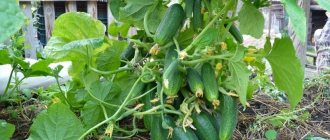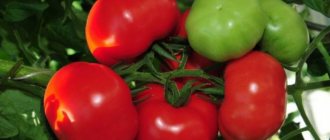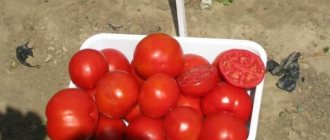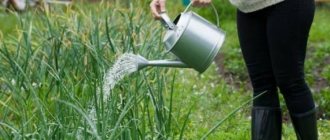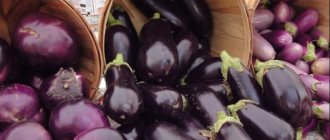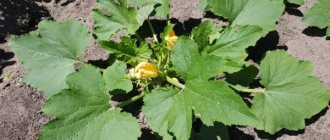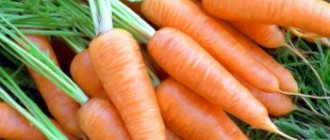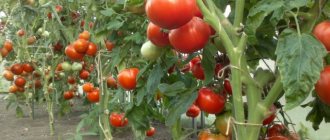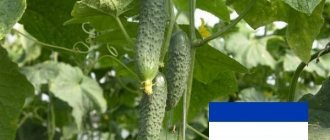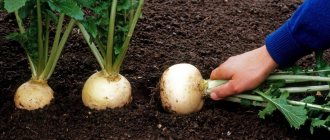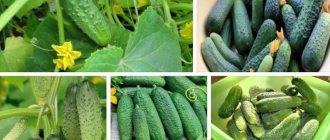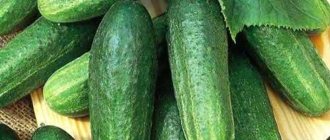Every year, compact varieties of zucchini increasingly displace their wattle relatives from vegetable gardens. Bush zucchini are in no way inferior to ordinary ones, while at the same time occupying an order of magnitude less land area. A relatively new variety of a favorite vegetable has quickly spread among gardeners.
Not so long ago, there were at most a couple of varieties of such seeds on the shelves. But thanks to the active work of breeders, today the number of such hybrids exceeds a hundred. The fruits of bush species have a wide culinary purpose. They are used to prepare absolutely all dishes that contain zucchini.
Early ripening varieties
There are several varieties that ripen in a short time. These include the varieties listed below.
Tsukesha
An early ripening variety, preferred by many gardeners. It is successfully grown throughout almost the entire territory of Russia. It gained popularity due to its frost resistance and unpretentiousness to soils. The main advantage is high productivity. The fruits are harvested until the first frost.
The length of the fruit does not exceed 40 cm. The peel is green, when fully ripe it acquires a yellowish or orange tint. The shape is elongated, cylindrical, juicy pulp with a pronounced taste. The plants are compact; up to 10 kg of ripe fruits are collected from each bush.
Baby
An early-ripening variety valued by gardeners for its high yields. A bush plant on which cylindrical fruits with a smooth surface ripen in 38-47 days.
The vegetable with a creamy-white peel and dense, white pulp reaches up to 20 cm in length and weighs 0.6-1 kg. It is preferable to grow the variety in well-lit areas in warm regions, as it can be subject to frost. From 1 sq. m, 9-10 kg of ripe fruits are collected.
Orange
An early ripening variety with an exotic appearance. Ripe fruits can be harvested after 40 days. The bush is compact, and round, bright fruits ripen on it, with a diameter of no more than 15 cm. The pulp is sweetish.
This variety is especially popular with those who prefer a raw food diet. The vegetable actually resembles an orange.
Skvorushka
The fruits of the early ripening variety are harvested 45-50 days after sowing. The fruits are cylindrical in shape and have a dark green skin. The surface is strewn with small white specks. Vegetables grow to a maximum length of 25 cm, reaching a weight of 0.5 to 1 kg. The zucchini feels a little ribbed. The pulp is white or light yellow, dense, soft.
The advantages include high productivity, resistance to cold and drought, and transportability. From 1 sq. m gardeners harvest 8-10 kg of mature zucchini.
Chaclun
This is a prolific plant. The Chaklun variety of zucchini is harvested 41 days after germination. During this period, vegetables weigh 500 g. An overgrown vegetable is identified by its elongated shape - it looks like a pear, and small ribs appear on the smooth peel. Zucchini is resistant to many diseases.
The early ripening variety has creamy, juicy, sweetish pulp. These zucchini are suitable for pickling and making zucchini caviar. After planting, it is necessary to water, feed the plants, and loosen the soil.
Belukha
An early ripening variety bred by breeders from Altai. The plant is compact and does not take up much space on the site. Zucchini ripens 40 days after sowing. The variety is resistant to bad weather, powdery mildew and bacteriosis, for which gardeners especially value it.
Zucchini has an elongated cylindrical shape, smooth, light green skin. On the surface of the zucchini there is a speckled spot in the form of stripes. One vegetable can weigh from 0.5 to 1.2 kg. Seeds are sown in April-May. Caring for plants involves loosening row spacing, fertilizing, watering, and weeding if necessary. From 1 sq. m, up to 3 kg of ripe fruits are collected.
Aliya F1
A hybrid that has gained popularity among many summer residents. The bush is powerful and has increased resistance to bacterial diseases and rot. The foliage can withstand the impacts of small hail. The first fruits begin to appear 49 days after seed germination. The pulp is juicy and tender.
Sowing of seeds is carried out in May. Zucchini has a cylindrical shape, reaching 25-30 cm in length. The fruit has a smooth, without ribbing, light green peel. The weight of one zucchini reaches 0.7-1 kg. Aliya zucchini is grown in open ground. Zucchini grows better in areas where tomatoes, onions, potatoes, and root vegetables previously grew. Better growth and abundant fruiting will be ensured by timely watering, loosening, regular weeding and fertilizing with mineral fertilizers.
Salvador
An early hybrid of zucchini. It is used for cooking in various ways, canning, and freezing for the winter. The fruits have not only good taste, but also a good presentation, which is especially important in the case of growing vegetables for sale. Zucchini has increased resistance to diseases such as powdery mildew. The peel of Dutch fruits is thin and dark green in color. Cylindrical vegetables with a smooth surface weigh 400-900 g and reach 18-20 cm in length.
The fruits are grown in open and closed ground. The harvest is harvested within 45-55 days. Care involves regular watering, loosening, hilling and fertilizing. 40-60 thousand kilos of crops are harvested from 1 hectare.
Ball
The main feature of the Myachik variety is spherical zucchini with green skin and light dots on the surface. Externally, a zucchini can be confused with a small ball - its unique appearance is especially valued by gardeners.
The pulp is juicy. Zucchini ripens in 50-55 days. The plant is small, the leaves are dissected.
Karam
An early ripening variety that attracts attention with its appearance and good taste. The fruits ripen 41-45 days after planting. The culture is demanding of heat, light and moisture. It takes root well in soils where the predecessors were cabbage, potatoes, onions, and legumes. Fruits with whitish or light green skin, cylindrical shape, smooth surface. The weight of one zucchini is 700 g.
Seeds are sown in May. The variety is grown in open or closed ground. Plants need to be regularly watered, fed, and the soil loosened. When ripe from 1 sq. m harvest up to 11 kg of fruit.
Moor
An early ripening variety, ripening 40-45 days after the appearance of the first shoots. The fruits are smooth, long, cylindrical in shape, with a smooth or slightly ribbed surface. The peel is thin green-black. The pulp is light beige, dense. The fruits weigh up to 1 kg. Young ovaries are often added to salads instead of cucumbers.
Seeds are sown in mid-April for seedlings or at the end of May in the ground. Zucchini harvested before frost can be stored in the living room until early to mid-summer. From 1 sq. m harvest 15-20 kg of zucchini.
Early ripening bush zucchini
After seed germination, the first zucchini ripens after 37-56 days. Most often they are grown in northern regions where summers are short. In the south, these varieties are planted when early greenery is harvested.
Bush zucchini is characterized by excellent productivity and unpretentiousness, they take root well in most climates, and do not require excessive care
The table shows some varieties:
| Variety name | Characteristic |
| Iskander F1 | To obtain an early harvest, the plants are covered with agrofibre. The fruits have a greenish color and crispy flesh. They are picked when they reach 12-17 cm. Inside, by this time they become sweetish. Later they lose their taste. |
| Aral F1 | After sowing the seeds, the hybrid begins to bear fruit after 45 days. Its yield does not decrease after cold days or bad weather. Zucchini has a greenish color. |
| Tsukesha | The variety is resistant to cold weather at the beginning of growth. The bright green fruits are sugary. Productivity per bush – 12 kg. Transportable. |
| Chaclun | The fruiting period is long. Ripening occurs after 47 days. Resistant to diseases. It is advisable to remove fruits weighing 0.5 kg. |
| Cavili F1 | Self-pollinates in the absence of bees. Fruiting lasts 2 months. |
Zucchini for the Urals
In order to obtain high yields of zucchini in the Urals, it is recommended to use a large number of different varieties and hybrids.
Pear-shaped
Fruits with pale orange-cream skin. Their pear-shaped shape and lightly ribbed surface especially attract attention. The weight of one fruit reaches 1-2 kg. The flesh is bright orange and tender.
These are very heat-loving plants that grow well only at temperatures above +25 degrees. The fruits ripen 80-90 days after the first shoots appear.
Mountain
An annual crop bred by Russian breeders. The plant has dark green leaves with a highly dissected shape. The fruits fully ripen 45 days after emergence.
Zucchini is cylindrical in shape, milky skin, firm and white flesh, rich in taste. One vegetable weighs about 1 kg. The harvested crop is suitable for preparing squash caviar and canning.
Zebra
Zebra zucchini has an interesting color, which is why many gardeners love it so much. The skin is dark green with lighter stripes.
This is an early ripening variety with excellent taste, increased resistance to low temperatures and various diseases. Fruits up to 7 cm in length are suitable for canning.
Late ripening zucchini
The fruits of late-ripening varieties of bush squash are more suitable for cold regions. There they are used for preparations for the winter, and they also have a fairly long shelf life after harvest.
Spaghetti raviolo
An interesting variety for many gardeners. The plant in the form of a bush is small and neat, fits even in a small garden area. The vegetable fruit itself is unusual and does not look like a zucchini at all. It is small in size, and a maximum of 8 ovaries are formed on the bush.
The peel is bright orange, like an orange, and the flesh is the same color. What’s curious is that it tastes like ordinary zucchini, which is used for canning, stuffing, or simply as a separate dish. The vegetable gets its name from the ability of overripe fruits to separate into fibers that resemble spaghetti.
Tivoli F1
These fruits grow large on the bush and need an area with space to grow. These zucchini ripen 4 months after planting. To prevent the fruits from falling, the crop must be irrigated regularly. The vegetable is medium in size, round in shape and yellow in color. When cooked, it can break down into fibers resembling spaghetti.
Lagenaria
An interesting type of zucchini that is not so often found in gardens. He was taken out in Vietnam. Overripe fruits tend to dry out, forming a cavity inside, which is why this vegetable previously served as material for vessels. This variety is exotic, and it takes a long time to ripen.
2-3 zucchini grow on one bush. They have an oblong, narrowed shape, the length of one fruit is 35-40 cm. Their color is light green with a white transition or inclusions.
Yield squash varieties
Yield zucchini is a variety that is preferred by many gardeners who grow fruits for their personal needs and to make a good profit from their sale.
Belogor F1
The bushes are compact. They grow juicy fruits, fully ripening 50 days after germination. The peel of zucchini is white, their average weight reaches from 500 g to 1 kg. Fruiting lasts about 90 days. The hybrid is resistant to gray rot. May be affected by anthracnose, powdery mildew and bacteriosis.
Gardeners with 1 sq. m harvest up to 14 kg of ripe zucchini.
Kuand
A unique variety valued by gardeners. The color of the fruit is the main advantage of the varieties. The skin of the fruit is light green with fuzzy lines of a darker shade. The color of zucchini is often described as “camouflage”. The culture is resistant to bad weather and numerous diseases. Fruiting lasts up to two months. During this period, gardeners can harvest up to 9 kg of crop per 1 square meter. m. The weight of a mature vegetable reaches 1-1.5 kg.
Caring for zucchini involves traditional agrotechnical measures. At the very beginning, you need to pay attention to protecting zucchini from weeds.
Nephritis
An early hybrid that begins to bear fruit 53 days after germination. Bush variety with high commercial and taste qualities. The zucchini peel has a dark green tint and a smooth surface. There is no ribbing. The vegetable has the shape of a cylinder. The pulp is light cream, thickened, fibrous. One fruit can weigh from 700 g to 1.5 kg.
Sowing is carried out in May. It is better to plant on soils where the predecessors were potatoes, cabbage, and onions. Plants need watering, loosening and fertilizing. From 1 sq. m, 12-14 kg of ripe fruits are collected.
Mini zucchini
When growing this variety, the first harvest is harvested 90 days after the first shoots appear. Mature zucchini reaches a weight of up to 400 g. The duration of fruiting is 3 months. During this period, it will be possible to collect about 5 kg per 1 sq. m.
The fruits are smooth, cylindrical in shape, and have a light green skin. The culture requires soil moisture and occasional fertilizing.
Walnut
An early variety that ripens 90 days after germination. Tolerates hot weather. The plant is resistant to rot in rainy summers. The weight of a mature zucchini reaches from 3 to 5 kg.
One plant can produce up to 8 kg of zucchini. Seeds are sown in warm soil in a sunny area of the garden.
How are bush zucchini different from each other?
When choosing bush squash varieties for open ground, you should give preference to large bushes with strong leaves that are resistant to both bad weather and harmful insects. Zucchini should have excellent resistance to known diseases. The following variety parameters are important:
- For good growth and fruiting, the variety must be suitable for a particular zone. In addition to the fact that zucchini loves warmth, there are also varieties that tolerate cold well.
- There are varieties whose fresh fruits are subjected to heat treatment, and there are also those that are intended for canning.
- In terms of taste, zucchini is very different: they have different pulp in terms of hardness, juiciness, and the presence or absence of seeds.
- The variety is better, the more fruit it bears. But this criterion directly depends on what this or that variety is intended for. The taste of zucchini does not matter if they are used for animal feed, but the degree of yield is important. At the same time, yield is not so important if the variety is used for food.
- The ripening times for zucchini are the same as for many vegetable crops: early mid-ripening, late ripening.
When choosing, it is advisable to give preference to several bush varieties of zucchini.
Self-pollinating varieties
These varieties of zucchini contribute to a stable harvest, regardless of the weather, the presence of insects and other factors.
Cavili F1
This hybrid is the result of Dutch selection. The fruits ripen 40-45 days after the first shoots appear. The plant is suitable for growing in open and closed ground. The dimensions of the bush are compact, due to which per 1 sq. m there are 4 plants at the same time. Zucchini is harvested until the end of autumn.
Zucchini is cylindrical in shape with light green skin and white flesh with a greenish tint. The length of the vegetable is 22 cm, weight is 320 g. The pulp is juicy and tender. From 1 sq. m harvest up to 9 kg of zucchini.
Parthenon F1
This is a hybrid that was bred by breeders from Holland. Due to the fact that plants self-pollinate, gardeners can from 1 sq. m to collect up to 15 kg of zucchini. The bushes are compact, not very growing. The harvest is harvested within 40-45 days after emergence.
The advantage of the hybrid is long-term fruiting, until September. Fruits with dark green skin. The shape is cylindrical, the surface is smooth and even. Vegetable length – 20-25 cm, weight – up to 300 g.
Suha F1
An early ripening hybrid - the harvest is harvested within 30-40 days after emergence. Suitable for growing in open and closed ground. Zucchini is cylindrical in shape, with a light green skin and light spots on the surface. The length of the zucchini reaches 18 cm, weight – up to 700 g.
Planting material is sown in May. The crop needs regular moistening, weeding, and fertilizing. The peel of the fruit contains dry matter in high concentration, so in the fall the zucchini remains juicy. The pulp is tasty. From 1 sq. m harvest up to 13 kg of zucchini.
Medusa F1
Super early hybrid, ripening within 35 days after the appearance of the first shoots. The plant is compact, suitable for growing in open ground or greenhouses. Self-pollinating bush. Zucchini has a club-shaped shape, the peel is smooth, thin, tender, light green in color. The pulp is dense, sweetish, green in color. The length of the vegetable reaches 25-30 cm, weight – up to 800 g.
Mature zucchini can be stored for a long time, until the onset of the new season. From 1 sq. m harvest up to 9 kg of crop.
Sangrum F1
An early-ripening, self-pollinating hybrid, ripening 38-40 days after the appearance of the first shoots. Cultivated in open and closed ground. The tall bush is predominantly compact in size. Planting work is carried out in May.
Zucchini is cylindrical in shape and has a light green skin. The pulp is green, dense, tender. The average weight of a vegetable reaches 350 g. The vegetable lasts a long time after harvesting. The crop needs good watering and fertilizing.
Classification of varieties
Like all vegetable crops, zucchini is divided into several subspecies according to the following characteristics:
- ripening periods (early, middle, late ripening);
- type of pollination (bee-pollinated or non-pollinated);
- method of planting (in open or closed ground);
- origin (hybrids or varieties);
- intended purpose (for sale, canning, eating raw or in salads, for preparing caviar).
Each owner himself chooses the varieties of zucchini that are most suitable for him, taking into account the characteristics of his site and plans for the future harvest.
Varieties for planting in open ground
Many varieties of zucchini tend to spread long vines and, accordingly, need large areas. At the same time, modern gardeners are often limited to a small area where they want to plant several different crops at the same time.
Black handsome
Early ripening variety. It is characterized by dense fruit pulp, without bitterness. The length of the zucchini itself reaches about 20 cm. The peel is dark green. The average fruit weight reaches 600-900 g. The duration of the growing season reaches 50-55 days. The fruit has a cylindrical shape with slight ribbing. Characterized by good taste.
The variety has increased resistance to powdery mildew, but requires compliance with certain care requirements. Requires constant watering, hilling, loosening the soil.
Spaghetti
A unique variety that has recently become popular. Young zucchini has the same taste as the usual varieties. But after full ripening, the fruit pulp begins to separate into fibers, which resembles a kind of spaghetti squash, which has many fans. Externally, ripened zucchini is similar in shape and color to small melons. The length of the zucchini reaches 30 cm, weight 0.7-1.2 kg. The peel is dense.
The only drawback of the variety is the late ripening period - 95-130 days from germination to full ripeness of the fruit. They are grown by seeds, less often by seedlings.
Lagenaria Calabash
Early ripening variety. Green fruits, apical leaves and shoots are consumed as food. The peel color is white, sometimes light green, the surface is smooth, the shape is cylindrical. The length reaches up to 1-1.2 meters, weight – up to 12 kilograms. When ripe, the fruits bend, taking on an unusual shape.
Sowing is carried out in open ground in April. Caring for plants involves timely tying growing shoots to the trellis, watering, regular fertilizing, and loosening the soil. The fruits ripen 80-100 days after emergence. Up to 40 kg of fruits are collected from one plant.
Odessky-52
An early ripening variety, bred by Ukrainian breeders in the mid-20th century. From the first shoots to the appearance of ripe fruits, only 40 days pass.
Zucchini is characterized by an oblong shape, milky or greenish skin with small specks. Pulp with a pinkish or yellowish tint. The variety is productive and has increased resistance to frost and diseases.
What imported and domestic varieties are there?
We recommend reading our other articles
- What to feed mulard ducks
- How to grow tomato seedlings at home
- Kuchinsky Jubilee breed of chickens
- Dead bees
Domestic varieties and hybrids have good frost resistance. Imported varieties have higher yields and are also often not inferior to previous ones in terms of resistance to cold weather. However, it is worth remembering that imported zucchini will not grow everywhere. To grow them, it is necessary to strictly follow the technology of preparing the soil, seeds, planting, and caring for the plant, otherwise there may be no fruit at all.
Of the simple domestic varieties, the most common are: “Beloplodny”, “Belogor F1”, “White Swan”, “Gribovskie 37”, “Rolik”, “Anchor”.
Bush zucchini varieties of foreign varieties take root well in different climatic zones. Of these, it is worth mentioning: “Astoria”, “Zebra”, “Golden Cup”, “Nero di Milano”, “Aeronaut”, “Souvenir”, “Tsukesha”.
Yellow varieties
There are amazing varieties of zucchini with yellowish skin, which especially attracts the attention of gardeners. The varieties are practically no different from white zucchini or vegetables with a different shade of skin.
Pineapple
Early ripening variety. Plant with a compact bush form. Fruiting begins 40-45 days after emergence and continues long and abundantly. The last fruits are harvested before the first frost. They are delicious and contain a full range of vitamins.
The zucchini skin is golden with a yellow tint and has a cylindrical shape. The pulp is juicy and does not become rough for a long time. The variety is popular for preservation and consumption in side dishes.
Golden
Until now, Zolotinka is considered one of the best varieties, and even many foreign hybrids are not superior to it. The name speaks for itself - the peel of the fruit is yellow, the plant is a bush plant. The fruits are elongated. The pulp is juicy, crispy, and the taste is excellent.
40 days after emergence, fruits weighing up to 500 g and about 15 cm long ripen. Up to 15 zucchini are harvested from one bush.
Gold Rush F1
A well-known hybrid of zucchini, reaching a length of up to 32 cm, weighing up to 200 g. The pulp is tasty, tender, juicy, and sweet. This is a representative of the Dutch selection.
The plant is powerful, bushy, and has high productivity. Seeds are sown in May. Suitable for growing in open areas. From 1 sq. m, up to 12 kg of ripe fruits are collected.
Goldline F1
An early maturing hybrid bred by Czech breeders. The fruits ripen 40 days after emergence. The peel is golden-green, the flesh is juicy and sweet. Zucchini is consumed even fresh.
The cylindrical vegetable reaches a length of up to 30 cm and a diameter of 4-6 cm. The seeds are sown in open ground at the end of May. From 1 sq. m harvest up to 6 kg of fruit.
Sunlight F1
A hybrid that was bred by French breeders. Zucchini is small, 18 cm long, weighing no more than 200 g. The surface of the peel is smooth, the color is golden yellow, the shape is cylindrical. Seeds are planted in open ground in May. The harvest is harvested 40-45 days after emergence.
The bushes are small and compact. From 1 sq. m harvest up to 12 kg of ripened zucchini.
Yellowfruited
Early ripening variety. The plants have a bush-like shape. The fruits have a bright yellow skin, a cylindrical shape, with some narrowing towards the stalk. The weight of one vegetable is 0.7-1.4 kg. The pulp is tasty and juicy. The length of the zucchini is up to 20 cm.
The variety can be planted with both seeds and seedlings. This variety is harvested in August-September. From 1 sq. m yields from 5 to 12 kg of ripened fruits.
Round zucchini - popular varieties
For those who love everything new and unusual, we can recommend growing round zucchini. They are similar in appearance to pumpkin, but taste like zucchini. Planted in open ground.
Ball
Ripens early. It got its name due to its spherical shape. The fruits are compact, no more than 500 g. The peel is greenish and the inside is white. For preparation, you should use young fruits, the weight of which is about 130 - 150 g. They are convenient to preserve and also stuff to your liking.
Zucchini "Orange F1"
Yellow-fruited variety. The zucchini is small. The weight of the fruit is only 300 grams. The spherical shape and rich orange color prompted the creators to give it a “citrus” name. Good for marinating and for preparing various dishes.
F1 Festival
This variety is distinguished by heavier fruits. The weight of one copy is 0.6 kg. Zucchini has an unusual appearance:
on the peel there is an interesting alternation of stripes of several colors: black, green, yellow and white. Similar in appearance to a pumpkin.
Pear-shaped
Included in the “yellow varieties” category. This variety of zucchini cannot be called round in the full sense, since it has an elongated shape. It gives it a resemblance to a pear. However, pumpkins also come in oblong shapes, so they generally fit into this category. The skin is golden yellow, the flesh is light yellow. The taste is juicy and soft.
Round varieties are used not only for food. They are a decoration for any garden. They are also used in interior design.
Bush varieties
There are so many bush squashes that it is difficult to list all the crops. Listed below are the varieties that are considered the most popular among gardeners. The demand for such zucchini is due to its taste and high yield.
Iskander F1
The plant does not branch; it grows in the form of a large, spreading bush. This is a unique Dutch hybrid, attractive for its high yield and increased resistance to many diseases. Early ripening zucchini, ripening 40-45 days after germination.
Zucchini has a club-shaped or cylindrical shape, narrow, with a smooth surface and slight ribbing. The peel is light green with white patches. The length of the zucchini reaches 20 cm, weight - 550-700 g. Up to 17 kg of crop is harvested from the bush. The pulp of the fruit is tender, tasty, pale green or light cream in color.
Aeronaut
Bush early ripening variety, ripening 45-50 days after the appearance of the first shoots. It gained popularity among gardeners due to the long-term storage of collected fruits. It has good taste and the presence of useful substances in its composition.
The fruits are elongated, elliptical in shape, even with a smooth surface. The peel is thin and green. The pulp is white, juicy, with seeds. The length of one fruit is up to 16 cm. The fruits are universal, they are consumed in different forms during the season. The plant itself is compact. Suitable for growing in open ground and greenhouses.
Gribovsky
Gribovsky zucchini grows on a variety of soils. Fruiting occurs 55-60 days after the appearance of the first shoots. The duration of harvesting can be up to one and a half months after the first fruits are harvested.
A compact, highly branched bush on which flowers and then fruits are attached closer to the base. Zucchini has a cylindrical shape. The skin is dense, hard, yellowish in color. The pulp is juicy, dense, with seeds. The variety attracts with its excellent taste. Contains many minerals and vitamins.
White
An early ripening and high-yielding variety, ripening 40 days after the appearance of the first shoots. A ripe zucchini reaches about 1 kg in weight.
The peel is white, the flesh is white with a yellowish tint, juicy. This variety is especially popular for preparing various dishes and canning.
Waterfall
An early ripening zucchini hybrid with a unique taste and attractive appearance. The fruits are cylindrical, with a smooth surface and green skin. The pulp is dense, white. The weight of one zucchini is 400-500 g. Only 42 days pass from the moment of sprouting to the ripening of the fruit.
Sowing is carried out in April and May. Waterfall zucchini prefer light soils, where the predecessors were potatoes, onions, cabbage, and legumes. Care consists of loosening the rows, weeding, watering, and feeding if necessary. Watering is especially desirable during flowering and fruiting periods. From 1 sq. m harvest 7-9 kg of zucchini.
Bush zucchini of domestic and foreign selection
Each variety has its own pros and cons. The choice is dictated by the purposes for which they are intended. Some cultivate zucchini, intending to store them for a long time, others want to get a harvest, the sooner the better.
Bush zucchini of the Iskander variety, which is especially popular among gardeners and gardeners
Domestic varieties of bush zucchini have greater frost resistance to frost and temperature changes than foreign ones. For this reason, they are more suitable for growing in the middle zone, in the northern regions. They are not very beautiful in appearance, but they are tasty and last a long time. Foreign varieties, especially Italian ones, are readily grown in the southern regions. Their pulp is more juicy, they are usually early ripening and very tasty.
Foreign varieties of bush zucchini are more productive than domestic ones. But in order to achieve success, cultivation technology must be strictly followed. Otherwise, vegetables often begin to get sick and die as a result. But they retain excellent presentation for a long time. If zucchini of domestic varieties lose their taste when overripe, then this does not threaten the vegetables of foreign breeders.
With proper planting and care, any variety of bush zucchini will delight you with high yields
Soft-skinned zucchini varieties
Occasionally, gardeners do not have to store zucchini for a long time, so they choose varieties with soft skin. Such zucchini is used immediately for preparing any dishes.
White Bush
This is an early ripening variety of Dutch selection. The fruits appear 5-6 weeks after germination. Gardeners note the good presentation of vegetables; they have a smooth surface, regular cylindrical shape, and light green skin.
The pulp is white-cream, soft, juicy. The variety is attractive due to its increased resistance to various diseases.
Genovese
A variety obtained by Italian breeders. This is an early ripening variety, the fruits are harvested 35-60 days after emergence. The fruits are small and retain their tender pulp and skin for a long time. The weight of one zucchini reaches 0.9-1.7 kg.
The variety is suitable for cultivation in open ground and greenhouses. It is characterized by increased resistance to diseases of humid climates - bacteriosis and powdery mildew.
Features of agricultural technology and selection of varieties for different regions
Depending on climatic conditions, growing zucchini in different regions has its own characteristics.
Southern Russia and southern Ukraine
Summer is long, hot, and often dry. When watered 1-2 times a week, zucchini of absolutely any type and variety grows well. To preserve moisture in the soil, it is advisable to mulch with any available materials - wood chips, nut shells, black agrofibre.
Mulching with wood chips helps retain soil moisture
In extreme heat, zucchini leaves often droop even in fairly moist soil, especially in varieties with wide, soft leaves. Varieties with hard, dissected leaves tolerate heat more easily.
Central Russia, northern Ukraine, Belarus
Any variety grows well in open ground, except nutmeg and lagenaria, which are successful only in warm summers. In cold spring, for early sowing, the bed is covered with film a week in advance so that the soil warms up well. In dry summers, watering is necessary.
In cold spring, zucchini beds are covered with film a week before sowing to warm the soil
Southern Urals, southern Siberia
Summer is short, but hot and dry, with sharp temperature changes. When watered 1-2 times a week, most varieties grow successfully, except nutmeg and lagenaria.
North and northwest Russia (including the Leningrad region), northern and central parts of the Urals and Siberia
Summer is short, cool, cloudy and rainy. Early cold-resistant varieties can bear fruit in open ground. It is advisable to cover with film in the spring when sowing. In the fall, you can also protect from frost by installing arches and stretching the film. Late and heat-loving varieties, even in a greenhouse, produce crops only in favorable years.
A simple shelter made of arcs with stretched film will protect against spring and autumn frosts
Climbing varieties
You can find not only bush varieties, but also climbing varieties. They bear edible fruits, and plant vines are good for decorating the area around the house.
The Amazing Giant
Ultra early ripening variety. It’s not for nothing that it got its name, because its fruits actually reach enormous sizes up to 1 meter. The plant grows long vines. The fruits are heavy, weighing from 6 to 10 kg.
The variety has great vitality and tolerates cold and dampness well. The variety is valued for its high shelf life - the fruits can be stored from one and a half to two years.
Climbing
A variety of zucchini bred by Italian breeders. Climbing plant with 3-5 meter vines. Mature fruits are slightly curved and have a lamp-shaped thickening at the end. The peel is creamy yellow. The flesh is aromatic, juicy and slightly crunchy.
The advantage of the variety is high yield, preservation of appearance during transportation, and long shelf life.
White-fruited varieties
White-fruited varieties are those with pale green, white or yellowish fruits. An alternative to white fruit is the zucchini variety.
From the extensive list of varieties of white-fruited zucchini, we will consider five popular, unique varieties in their own way:
- Iskander F1;
- CaviliF1;
- Gribovskie 37;
- BelogorF1;
- Video clip.
Varieties for growing in Siberia
There are varieties of zucchini specially bred for Siberia that are resistant to harsh climatic conditions. Below are the best of them.
Video clip
An early ripening variety, not picky about soil. Prefers soils where the predecessors were onions, potatoes, cabbage, and legumes. Elongated zucchini can grow in any soil. The vegetables have greenish skin and white flesh.
The fruits ripen 35 days after germination. Subsequently, productivity increases significantly. Harvest before the first frost. The advantage of this variety is its high shelf life and resistance to mechanical damage.
Anchor
Zucchini of this variety is grown everywhere, except in the far north. The bush is small. The fruits ripen 45 days after emergence.
The fruits are elongated, elliptical in shape. The skin is pale, the flesh is white, dense. The variety tolerates transportation well over long distances and is stored for a long time. It is best to grow zucchini in open ground.
Lagenaria long-fruited
This is an early ripening variety of zucchini, the fruits can be harvested 45-55 days after the appearance of the first shoots.
Zucchini with a thin, fragile pale green skin. The shape is elongated, cylindrical, the surface with light ribbing. The weight of one zucchini reaches from 900 g to 1.7 kg. Recommended for planting in open ground. Requires regular watering, fertilizing, loosening the soil and hilling.
Pharaoh
Early ripening variety. Plants grow like a bush or climb, forming 1-2 vines no more than 50 cm long. Zucchini has a cylindrical shape, a dark green peel with small specks. The weight of one zucchini reaches up to 1 kg. The pulp is soft and juicy. The fruits are harvested 39-43 days after the first shoots appear. From 1 sq. m, 6-9 kg are collected, under temporary film shelters the figure increases to 15 kg.
The variety has increased resistance to fruit rotting and relative cold resistance. Large ripe zucchini can be stored in a cool room until March.
Important gentleman
A relatively young variety that appeared not so long ago, but has won the sympathy of Siberian gardeners. The fruits ripen early - 45-60 days pass from the moment of sowing to full maturity.
The surface is ribbed. The peel is dark green, the flesh is creamy. The fruits are juicy and tender. The weight of one root crop reaches from 600 g to 1.3 kg.
Beloplodny
Early ripening variety. The plants have a bush-like shape. The fruits appear 36-44 days after germination.
The fruits are cylindrical, slightly ribbed at the base, and tasty. The peel is whitish-green, turning white or yellow when the seeds ripen. The weight of one fruit is 0.7-1 kg. From 1 sq. m harvest about 7-10 kg of crop. The disadvantage of this variety is that it is not resistant enough to fruit rotting.
Motley
Early maturing Siberian variety of zucchini. The bushes are compact. It takes 45-55 days for the fruit to fully ripen. Zucchini has a thin skin, with small specks on the light green surface. The inside of the fruit is white, moderately juicy, but slightly sweet.
Ripe zucchini can last until spring if stored properly. The variety is undemanding in care. Ripens well with minimal watering, but prefers moist soil. From 1 sq. m harvest up to 7 kg of ripe zucchini.
Indian happiness
An early ripening variety, adapted to the harsh Siberian climate. Characterized by high levels of endurance to sub-zero temperatures and diseases. Fruits in 45-60 days after sowing.
General principles of cultivation
Zucchini seeds are sown in a well-fertilized bed (a bucket of humus or half a bucket of manure per 1 square meter) after the end of spring frosts, when the soil warms up to +20°C. Sowing time is from late April in the south to early June in the north. You can sow under film 1–2 weeks earlier. The sowing distance is 70–90 cm, sowing depth is 2–5 cm. 2–4 seeds are sown in each hole, so that 1–2 best plants are left later. Excess shoots are carefully cut off at the root so as not to damage the root system of the remaining plants when they are pulled out.
Sow several seeds in one hole to leave 1-2 best plants
When directly sown in the ground, zucchini grows more powerful and healthy, with a deep root system, and can more easily withstand drought and cold weather, so direct sowing is always preferable to growing seedlings.
When watering, only moisten the soil around the plants, avoiding water getting on the leaves and fruits.
During the season, the zucchini bed is regularly weeded to remove weeds, the soil is loosened, and if there is insufficient rain, a bucket of water is poured onto each planting site. When watering, only moisten the soil around the bushes, preventing water from getting on the leaves and fruits.
Video about growing zucchini in open ground
Novice gardeners often make the mistake of mistaking the natural spotted color of the leaves of some varieties for a manifestation of a disease. In fact, they are quite easy to distinguish:
- natural coloring - uniform on old and young leaves, without signs of drying out;
- downy mildew - begins with old leaves, random yellow spots and drying out of the edges;
- Powdery mildew is a white, washable powdery coating on the surface of leaves, with clearly visible pinpoint lesions.
How to distinguish natural leaf spot from disease (photo gallery)
Natural coloring of variegated varieties - uniform on old and young leaves, without signs of drying out
Downy mildew begins on older leaves and results in random yellow spots and drying out of the edges.
Powdery mildew is a white, washable powdery coating on the surface of leaves, with clearly visible pinpoint lesions
If the disease appears at the end of the season, no special treatments are required; if the disease develops early, it can be sprayed with Strobi. Next year, any crops are grown in the infected area except zucchini, pumpkin, cucumbers and lettuce. Zucchini does not have any special pests.
Varieties with excellent keeping quality
There are several varieties of zucchini, which after harvesting are stored for a long time and do not lose their taste and beneficial properties. These varieties include those described below.
Aral F1
An early ripening hybrid characterized by high yield. The bush is compact. Zucchini has an elongated oval shape, the skin is pale greenish with a dense network of white veins. The pulp is white, elastic. The first harvest is harvested 30 days after germination.
Almost never gets sick. Zucchini is suitable for processing for winter preparations.
F1 Festival
A hybrid that is usually used for decorative purposes: to decorate summer cottages and country houses. The rounded fruits are similar in appearance to a decorative pumpkin. The weight of one zucchini reaches 600 g.
The peel has an interesting color on the surface, alternating black, yellow, green and white stripes. The taste of the vegetable is quite good. Suitable for stuffing, marinating and baking.
Golden Key
An early ripening and cold-resistant variety. Zucchini has a cylindrical shape and reaches a length of up to 18 cm. Vegetables after harvesting in the fall are well stored until February, without losing their taste and commercial qualities.
5-6 ripe fruits are collected from one bush at once.
Negro
An early ripening variety that begins to bear fruit 40 days after germination. The bushes are compact. The fruits are cylindrical, elongated. The weight of one fruit reaches up to 1 kg.
The peel is smooth, black-green in color with small white spots. The skin is dense and of medium thickness, which ensures long-term storage. The pulp is green and juicy. Seeds are sown in late May-early June after spring frosts. The fruits are aligned and attractive due to their cylindrical shape. Presentation is the main advantage of the variety. The skin is light green in color. The pulp is white, with moderate juiciness.
Today there are a lot of varieties of tender, juicy zucchini with excellent taste. They all differ in appearance and are attractive due to their significant dimensions and the shade of the peel. Proper cultivation will ensure high yields, regardless of which variety was chosen.
0
0
Copy link
High-yielding plant varieties
Many gardeners dream of planting plants on their plot that will produce an unprecedented amount of fruit. There are several record-breaking varieties:
- Quand;
- Belogor;
- Black handsome.
By planting the seeds of these varieties in the garden, you can be sure that you will not be left without fruits.
The most important thing is to follow all the rules of agricultural technology, then the plants will not constantly get sick and be attacked by pests. Only in this case will it be possible to get a large harvest of tasty and healthy fruits.
Iskander F1. Yield record holder
This type of zucchini is popular among gardeners because of its outstanding yield, good taste, tolerance to powdery mildew and unpretentiousness.
This Dutch hybrid can be cultivated in open ground.
Zucchini is oblong in shape, has an inconspicuous waxy coating, measures from 20 to 25 cm, weighs about 0.5 kg.
The main advantage of this variety of bush zucchini is its extremely high yield, more than 15 kg per bush. It can form ovaries in relatively cold conditions and can be planted earlier than other varieties. From the emergence of zucchini shoots to the technical ripeness of the first fruits, 40 days pass. These qualities allow you to harvest 3 crops per season in open ground.
This variety grows in the form of powerful bushes, does not form lashes and does not spread throughout the territory. Bush zucchini is planted at a distance between bushes of at least 60 cm. For planting, you need to choose a place in open ground where groundwater does not approach the surface. The soil should be light, with medium acidity.
There is no need to plant zucchini in open ground in one place year after year; they grow best where potatoes, peas, and onions were previously cultivated.
To attract pollinating insects, you can spray the plant in the morning with syrup prepared in the following proportion: 1 tsp.
sugar or honey per glass of water. It is necessary to harvest zucchini on time, then good conditions are created for the development of new fruits, and overripe Iskander zucchini has no gastronomic value. The Iskander F1 variety is disease resistant. If crop rotation is observed, it is weakly affected by powdery mildew and bacteriosis.
The main disadvantage of the Iskander variety is that it is a hybrid. This means that seeds must be purchased, and their purchase always contains elements of a lottery.
